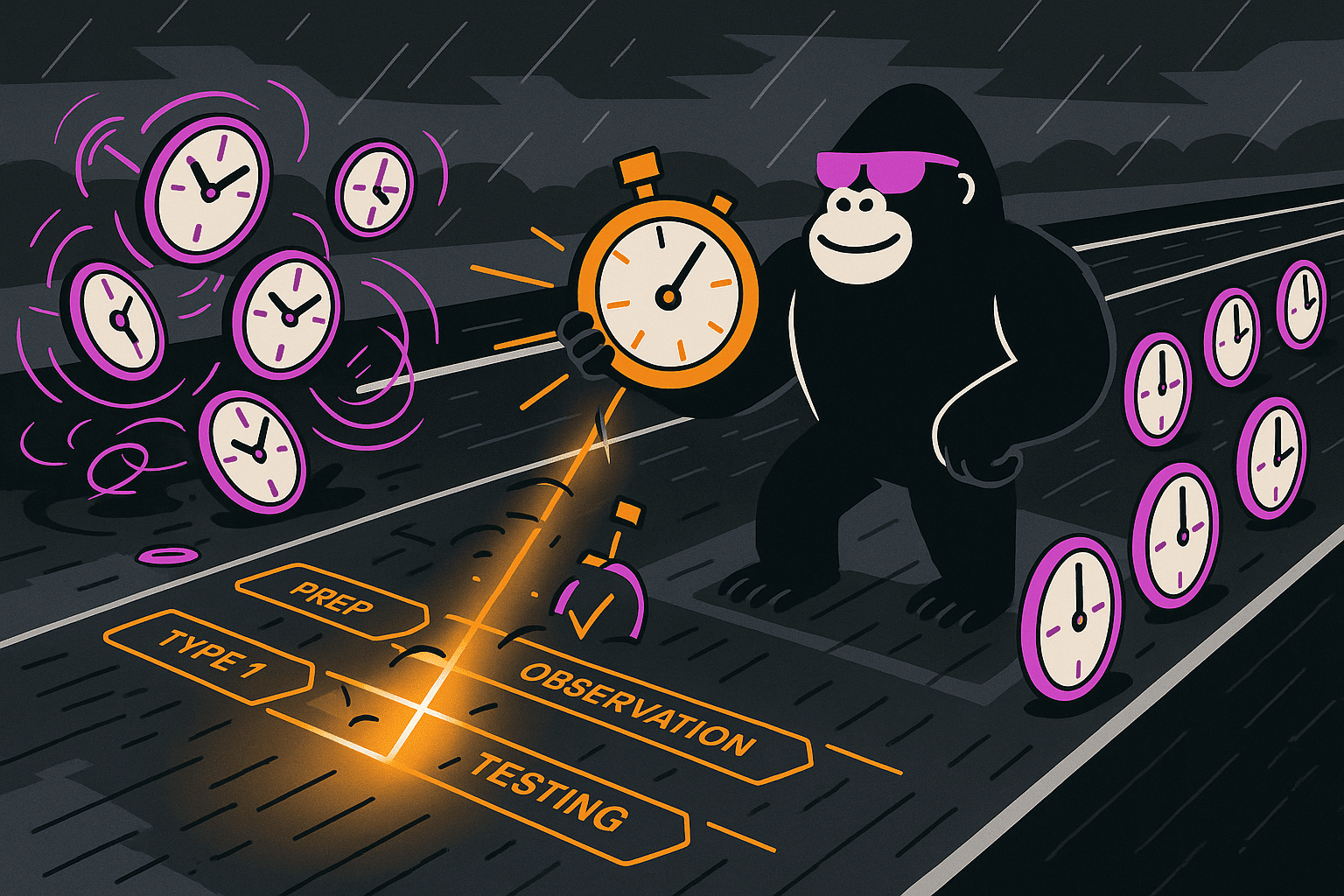Ever tried herding cats through a car wash? That’s a bit like preparing for a SOC 2 audit—chaotic controls on a slippery ride. I’ve seen teams scramble to gather evidence at the last minute, only to realize they forgot key policies.
In this article, I’ll walk you through realistic timelines for SOC 2 Type 1 and Type 2 audits, highlight what can speed up—or stall—your progress, and share pro tips I’ve honed over countless engagements.
Pre-audit preparation
Before your auditor slides into your DMs (or conference room), you need a crystal-clear game plan. I start by running a readiness assessment that typically takes 2–6 weeks—this is where I baseline your controls for people, processes, and technology, and spot the gaps. Then comes remediation, which can take 2–8 weeks depending on how many surprises pop up.
I call this the “road‐trip pit stop”: the more time you spend tightening lug nuts and topping off oil, the smoother the ride when you hit the highway.
| Phase | Duration | Purpose |
| Readiness Assessment | 2–6 weeks | Baseline existing controls and identify policy, process, and tool gaps. |
| Gap Remediation | 2–8 weeks | Fix deficiencies—timing varies based on complexity of issues. |
PRO TIP
I always configure a compliance platform to fire off automated reminders for evidence hand-offs. Fewer spreadsheets, more sleep.
Type 1 timeline
A Type 1 audit is like a snapshot of your controls on a specific date. I guide teams through four phases:
- Preparation (2–6 weeks): I help draft policies, set up tooling, and gather artifacts.
- Evidence Collection & Testing (2–6 weeks, concurrent): We pull point-in-time logs and docs—this is sampling, akin to spot-checking factory output for defects.
- Audit Execution (1–3 weeks): Your CPA walks the floor with me, interviewing control owners and ticking off checklists.
- Report Delivery (1–2 weeks): The final Type 1 report lands in your inbox.
Realistically, you’ll wrap up in 4–8 weeks—closer to 10 if the prep was a mad dash.
| Phase | Duration | Notes |
| Preparation | 2–6 weeks | Draft policies, prep artifacts, configure tools. |
| Evidence Collection & Testing | 2–6 weeks | Spot-check logs, system snapshots, and control documents. |
| Audit Execution | 1–3 weeks | Auditor walkthroughs and interviews. |
| Report Delivery | 1–2 weeks | Final Type 1 opinion issued. |
PRO TIP
I’ve learned to schedule evidence-gathering during low-traffic periods—fewer change requests mean fewer surprises.
Type 2 timeline
Type 2 dives deeper: you prove that your controls actually work for a sustained period. First-timers often choose a 3–6 month observation window. Here’s how I break it down:
- Observation (3–6 months): Continuous control operation—think of it as your controls running a health tracker for months.
- Evidence Gathering (throughout): We collect logs, tickets, and test results end-to-end. This isn’t a one-off; it’s like recording every lap in a race.
- Control Testing (2–4 weeks post-window): Auditors sample events across months to verify consistency.
- Report Delivery (1–2 weeks): After testing, your Type 2 report is issued.
Most finish in 4–8 months. If you opt for a full 12-month cycle or add global systems, budget up to a year.
| Phase | Duration | Notes |
| Observation | 3–6 months (first-time) | Continuous control operation—minimum 3 months for credible sampling. |
| Evidence Gathering | Observation period | Logs, tickets, and results harvested continuously. |
| Control Testing | 2–4 weeks | Sample-based testing to confirm consistency. |
| Report Delivery | 1–2 weeks | Depends on auditor capacity and report complexity. |
PRO TIP
In my engagements, negotiating a 3-month window with your auditor shrank my clients’ fees by nearly 30%
Key drivers
Not all audits are created equal. I’ve seen timelines stretch when control maturity is low—teams without playbooks hit roadblocks. Big scope—multiple apps, data centers, or regions—adds weeks. Shoddy documentation means I spend audit days hunting for policies instead of building rapport with your CPA. And automation? If you haven’t integrated your SIEM or ticketing system, expect to manually export CSVs. Choosing an audit partner with a proven track record and leveraging a compliance platform can cut manual effort by 40–60%.
PRO TIP
Run a mini pilot on a single control—like user-access reviews—to gauge your documentation quality before the full audit.
Fast-track tips
You can still move fast without skimping on rigor.
- Automate Evidence Collection: Integrate cloud providers, SIEMs, and ticketing tools so logs and snapshots flow in automatically.
- Start with Type 1: Use your Type 1 report as proof to galvanize stakeholders before the longer Type 2 cycle.
- Engage Auditors Early: I host a kickoff workshop to align scope, clarify control objectives, and set milestones.
- Treat Controls as BAU: Run quarterly mini-audits so evidence gathering feels routine, not a fire drill.
PRO TIP
Assign each control a dedicated owner with strict SLAs for evidence deliverables—accountability prevents bottlenecks.
Next steps
You’ve crossed the finish line—congrats—but certification isn’t a trophy you stash away. Treat your SOC 2 controls like your car’s maintenance schedule: keep logs fresh, review policies quarterly, and run small-scale test runs monthly. That way, when it’s time for your next cycle, you’ll coast through with minimal friction. Ready to turbocharge your trust posture? Let’s keep that compliance engine purring.









